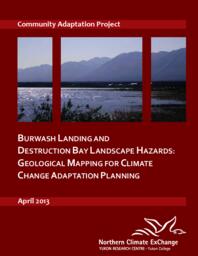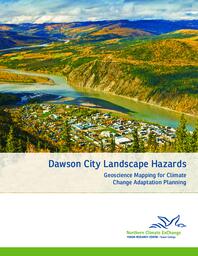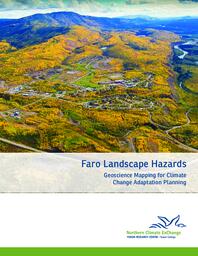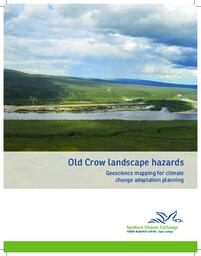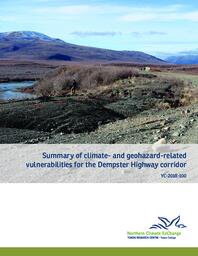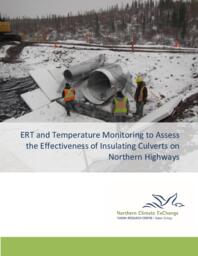Grandmont, Katerine
Person Preferred Name
Katerine Grandmont
Affiliation
Related Works
Content type
Digital Document
Description / Synopsis
This project investigates contemporary landscape hazards related to permafrost degradation in Burwash Landing and Destruction Bay, Yukon. It also considers potential impacts of a changing climate on the local landscape. The work is accomplished by conducting surficial geological mapping and gathering geoscience data, including landscape metrics, permafrost conditions and hydrology. Projections of future climate variability (e.g., temperature and precipitation) for the region are used to identify potential future trajectories of change. Based on these data, landscape hazards are ranked in four categories, varying from no risk to high risk, and are represented graphically (in stoplight colours) on maps covering the study area. By incorporating projections of future climate variability, landscape hazards classification reflects both contemporary and potential future conditions.
Origin Information
Content type
Digital Document
Description / Synopsis
Climate change is a significant challenge for northern communities, where the impacts of a warming climate are already having considerable effects (Huntington and Weller, 2005). Many people living in small, isolated communities in northern Yukon are concerned about climate-related risks in their regions. Because adverse impacts are a reality, it is important to implement measures to reduce or moderate the negative effects of climate change – in other words, to implement climate change adaptation strategies.
Origin Information
Content type
Digital Document
Description / Synopsis
Climate change is a significant challenge for northern communities, where the impacts of a warming climate are already having considerable effects (Huntington and Weller, 2005). Many people living in small, isolated communities in northern Yukon are concerned about climate-related risks in their regions. Because adverse impacts are a reality, it is important to implement measures to reduce or moderate the negative effects of climate change – in other words, to implement climate change adaptation strategies.
Origin Information
Content type
Digital Document
Description / Synopsis
Climate change is a significant challenge for northern communities, where the impacts of a warming climate are already having considerable effects (Huntington and Weller, 2005). Many people living in small, isolated communities in northern Yukon are concerned about climate-related risks in their regions. Because adverse impacts are a reality, it is important to implement measures to reduce or moderate the negative effects of climate change – in other words, to implement climate change adaptation strategies.
Origin Information
Content type
Digital Document
Description / Synopsis
Climate change is a significant challenge for northern communities, where the impacts of a warming climate are already having considerable effects (Huntington and Weller, 2005). Many people living in small, isolated communities in northern Yukon are concerned about climate-related risks in their regions. Because adverse impacts are a reality, it is important to implement measures to reduce or moderate the negative effects of climate change – in other words, to implement climate change adaptation strategies.
Origin Information
Content type
Digital Document
Description / Synopsis
The Dempster Highway is the only road connection to the western Arctic. Now connected with the Inuvik-Tuktoyaktuk Highway, it is part of the infrastructure linking southern Canada with the Arctic Ocean. Extensive reconstruction of the Dempster Highway has been completed on the NWT side of the territorial border in response to degradation of the road surface and embankment. Recognizing the need to ensure year-round availability of the Dempster Highway in the context of increasing traffic and a changing climate, Yukon Government Department of Highways and Public Works (HPW) has initiated a project to create a functional plan that specifically considers contributions of climate change to geohazards along the highway. Research and analysis required to assess climate and geohazard vulnerability have been carried out by the Northern Climate ExChange, part of the Yukon Research Centre at Yukon College, feeding into the functional planning process carried out by an engineering consultant. This report is a summary of climate- and geohazard-related vulnerabilities for the highway corridor.
Origin Information
Content type
Digital Document
Description / Synopsis
Heat transfer into the ground at highway culvert locations can lead to the thawing of permafrost, damaging infrastructure, shortening its lifespan, and increasing maintenance costs. The Dempster Highway in the northern Yukon experiences multiple culvert failures attributed to permafrost thaw. The Yukon Government Department of Highways and Public Works wants to further understand the problem and test potential mitigation methods. A necessary culvert replacement at km 381 provided the opportunity to trial the use of a layer of rigid foam insulation under the new culvert, with the intention of providing an insulating layer between the culvert and the permafrost underneath. Permafrost researchers at the Northern Climate ExChange (NCE) developed an approach to monitor the effectiveness of the insulating layer using a combination of temperature and electrical resistivity monitoring.
Origin Information

